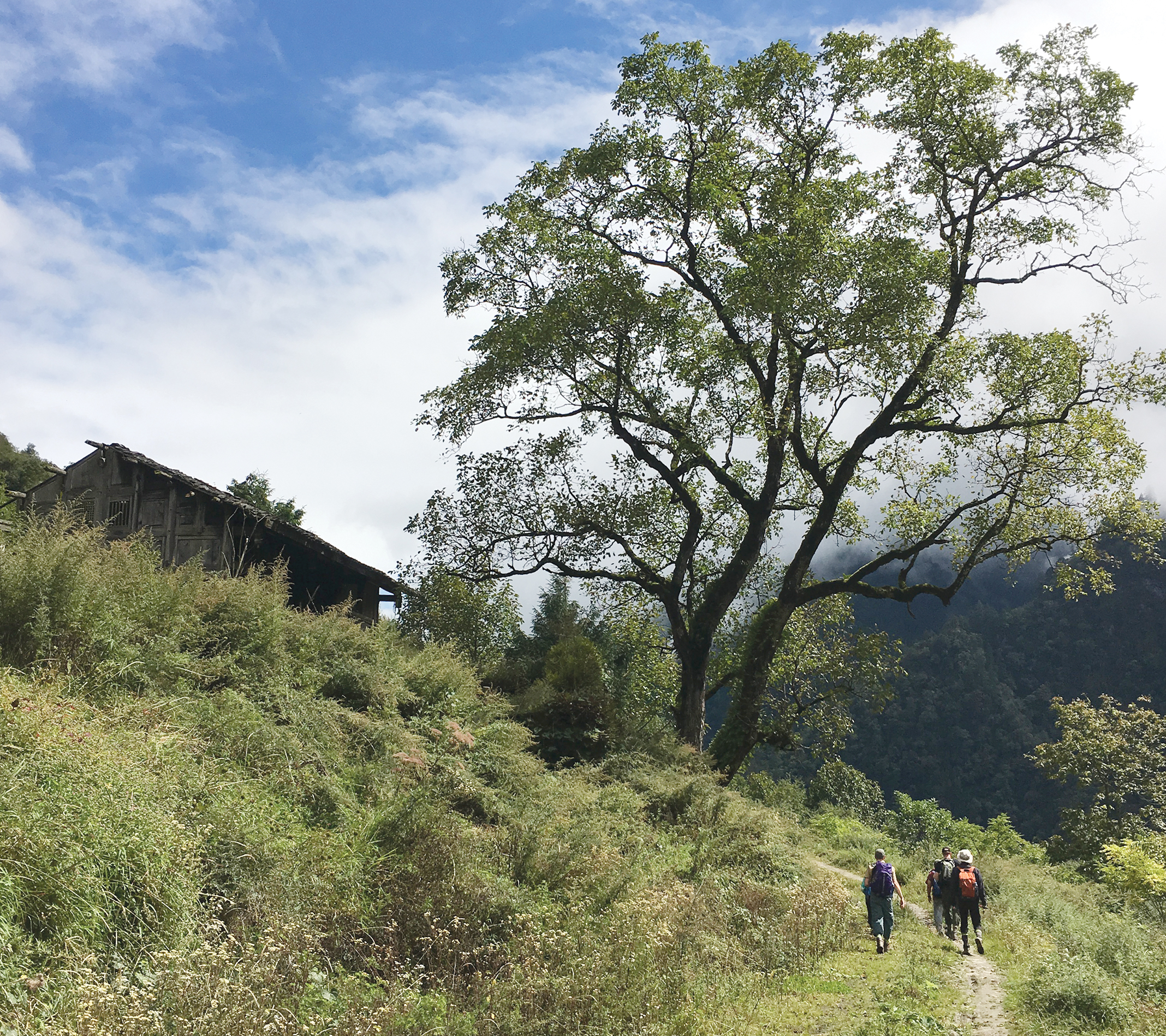Since the Arnold Arboretum began its Campaign for the Living Collections in 2015, plant-collecting expeditions have launched with a fervor and sweeping extent rarely seen before. So far, 14 separate trips have taken place across Europe, Asia, and North America. These forays yielded incredible plant riches, from new collections of the dainty-leaved regal lily (Lilium regale)—first introduced from China to the Arboretum by Ernest Henry Wilson—to the mast harvested from towering American beeches (Fagus grandifolia) in mature forests of eastern North America. With the 2017 season concluded, the Arboretum has progressed well toward its 10-year goal of securing germplasm from almost 400 target taxa or desiderata enumerated in the Campaign’s opening communiqué (Friedman et al., 2016). So far, the Arboretum has acquired 147 taxa from the list, resulting in over 200 accessions now in propagation and production at the Dana Greenhouses and Nursery—with a few already growing in the permanent collections.
Deciding how, when, and where to collect a diverse array of target species requires organization, and several precepts guide our efforts. One of these is the “greatest bang for the buck” principle: geographic areas with the highest concentrations of plants on our wish list become hot spots for concentrated and repeated expeditionary activity. Our teams focus on these areas first, and as the Campaign progresses and we check targets off the list, high priority areas shift to those of lower priority. Because eastern North America and eastern Asia possess many of our desiderata, they will always remain important collecting spots, as they were in 2017.
A second principal in the Campaign gives precedence to species with confined native ranges, or select portions of their native range. For example, the nutmeg hickory (Carya myristiciformis) grows in isolated populations from Texas to South Carolina, and its importance was a reason why a team of explorers went to the coastal southeast. The Campaign also seeks to increase the genetic diversity within certain genera grown at the Arboretum. This means growing as many species as possible within each genus, as well as growing multiple, well-documented representatives of each of those species. This is particularly true for the Arboretum’s six Nationally Accredited Plant Collections™: maple (Acer), hickory (Carya), beech (Fagus), Stewartia, lilac (Syringa), and hemlock (Tsuga). For species in these and other priority genera, we seek to grow accessions representing the center and distinct reaches of the native ranges.
Beyond acquiring targeted species, the Campaign leverages chance by making supplemental or opportunistic collections in the field. To date, over 350 of these taxa have been collected for the Campaign, many on expedition. Some have promising ornamental merit and await further trial and selection, such as the paperbark filbert (Corylus fargesii), an up-and-coming horticultural commodity collected on the 2015 NACPEC trip to China. Other collections represent novelty, such as the Georgian oak (Quercus iberica), a species never before grown in the living collections and acquired in 2016 in the Republic of Georgia.
Just as we cannot predict all the species we will successfully acquire, we cannot anticipate all of the challenges and hazards encountered along the way. Treacherous road conditions, seasonal drought, and terrestrial leeches are just some of the things that can affect an expedition. Despite these and other encounters in the field, however, the 2017 expeditions bore amazing fruit: over 100 taxa and almost 150 separate collections! This leads to one more reflection about the Campaign for the Living Collections: it is as much about the growth of people as it is about the growth of our collection. This year, eight Arboretum staff members went into the wilds. Whether it was their first or their tenth expedition, each collector discovered and grew, and brought those experiences back to the Arboretum.
Citation: Dowell, Robert and Michael S. Dosmann. 2017. 2017: A Banner Year for the Campaign for the Living Collections. Arnoldia 75(3): 2–4.
The Campaign articles profiled in this issue of Arnoldia highlight some of those experiences, from the humbling appreciation and celebration of history to the excitement of encountering a familiar species for the first time in the wild. We appreciate how “reading a habitat” leads to species acquisition, and how there is no substitute for seeing a plant in the wild in order to figure out how to cultivate it. Lastly, there is the value of persistence: sometimes, to secure a species you must collect it far and wide, and at other times, you must resort to an unusual propagation method. These represent just a few of the stories from 2017, and we look forward to those that the next seven years will bring.

Literature Cited
Friedman, W.E., M.S. Dosmann, T.M. Boland, D.E. Boufford, M.J. Donoghue, A. Gapinski, L. Hufford, P.W. Meyer, and D.H. Pfister. 2016. Developing an exemplary collection: A vision for the next century at the Arnold Arboretum of Harvard University. Arnoldia 73(3):2–18.
Robert Dowell was a Living Collections Fellow (2016–2017) and Michael S. Dosmann is the Keeper of the Living Collections at the Arnold Arboretum.
From “free” to “friend”…
Established in 1911 as the Bulletin of Popular Information, Arnoldia has long been a definitive forum for conversations about temperate woody plants and their landscapes. In 2022, we rolled out a new vision for the magazine as a vigorous forum for tales of plant exploration, behind-the-scenes glimpses of botanical research, and deep dives into the history of gardens, landscapes, and science. The new Arnoldia includes poetry, visual art, and literary essays, following the human imagination wherever it entangles with trees.
It takes resources to gather and nurture these new voices, and we depend on the support of our member-subscribers to make it possible. But membership means more: by becoming a member of the Arnold Arboretum, you help to keep our collection vibrant and our research and educational mission active. Through the pages of Arnoldia, you can take part in the life of this free-to-all landscape whether you live next door or an ocean away.




